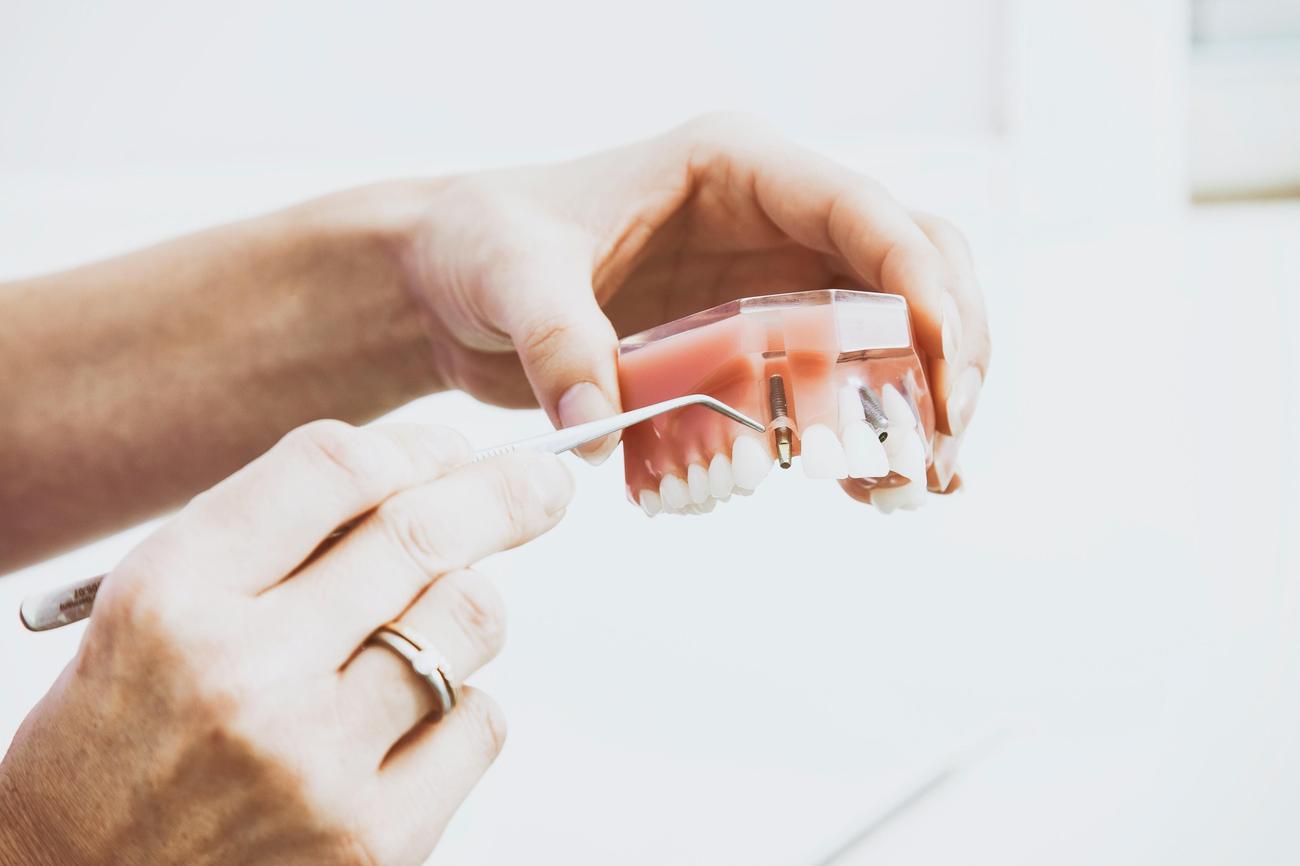Welcome to “The Mechanics of the Mouth: Exploring How It Works,” where we delve into the fascinating world of oral health. As a dental hygienist with over a decade of experience, my passion lies in understanding the intricacies of oral care and educating others about its importance. In this comprehensive article, we’ll uncover the secrets of the mouth’s mechanics, shedding light on its anatomy, functions, and the crucial role it plays in our daily lives. Join me on this journey as we demystify the workings of the mouth and gain a deeper appreciation for the amazing workings of this integral part of our bodies.
How does the mouth work?
The mouth is an incredible part of our body that performs essential functions like eating, speaking, and breathing. It is not just a simple opening but a complex system consisting of various parts working together seamlessly. Let’s dive into the mechanics of the mouth and explore how it works.

First, let’s talk about the structure of the mouth. The mouth is made up of several components, including the lips, gums, teeth, tongue, and salivary glands. Each part has its own unique role in ensuring the mouth functions properly.
The lips serve as the gateway to the mouth, forming a protective barrier. They not only enhance our facial expressions but also help us articulate sounds when we speak. The lips are like the front door, welcoming everything that enters the mouth.
Moving inside, we have the gums or gingiva. These pink tissues surround and support the teeth. The gums act as the foundation, holding the teeth securely in place. Proper oral hygiene, including brushing and flossing, is important to keep the gums healthy and prevent gum disease.
Ah, the teeth! They are the stars of the show, responsible for chewing and breaking down food. Teeth are like little tools in our mouths, designed for cutting, grinding, and crushing food into smaller pieces. We have different types of teeth, such as incisors, canines, premolars, and molars, each playing a specific role in the chewing process.
The tongue, a muscular organ, sits comfortably in the mouth. It helps us taste, swallow, and articulate words. The tongue is like a skilled conductor, orchestrating the movement of food and forming sounds when we talk. It works in collaboration with the teeth and saliva to enable efficient chewing and speech.
Speaking of saliva, it plays a vital role in maintaining a healthy mouth. Salivary glands produce saliva that keeps the mouth moist, aids in swallowing, and helps cleanse the mouth. Saliva contains enzymes that assist in the digestion process, breaking down carbohydrates and lubricating the food as we chew.
Now that we understand the different parts of the mouth, let’s explore how it functions. The mouth is the beginning of the digestive system, where mechanical digestion starts. When we consume food, it enters the mouth through the process of ingestion.
When we take a bite of that delicious sandwich, the teeth go to work, chewing and breaking down the food. As we chew, saliva is secreted, moistening the food and aiding in the mechanical breakdown. This creates a cohesive mass called a bolus, ready to be swallowed.
It’s important to note that the mouth is not just responsible for digestion. It also plays a crucial role in communication and producing aspects of the voice. We use our mouth to shape sounds and form words, allowing us to express ourselves through speech.
To summarize, the mouth is a remarkable part of our body, performing multiple functions. It is like a well-coordinated team, with each part playing a specific role. From the lips that protect and articulate, to the teeth that chew and grind, and the tongue that orchestrates movement and speech, every component works harmoniously to ensure the mouth functions correctly.
By understanding how the mouth works, we can appreciate its complexity and significance in our daily lives. Practicing good oral hygiene, including brushing and flossing regularly, visiting a dentist, and paying attention to our overall oral health, allows us to maintain a healthy mouth and enjoy the benefits it provides. So, let’s give our mouth the care and attention it deserves!
“The mouth is not just a gateway; it is a powerhouse that helps us eat, speak, and breathe. Understanding its mechanics allows us to appreciate its remarkable functionality.”
The mouth is an incredible part of the human body. Have you ever wondered about the fascinating facts about mouth? If so, you’re in luck! We have compiled a list of intriguing information that will leave you intrigued and wanting to learn more. From the taste buds on your tongue to the role saliva plays in digestion, the mouth is a remarkable system. To dive deeper into the world of mouth facts, click here: facts about mouth. Prepare to be amazed by the wonders that lie inside this often underestimated part of our anatomy.
Swallowing: The Intricacies of the Mouth and Beyond
[youtube v=”tRIpwPD3gc8″]
The Process of Swallowing: An In-Depth Anatomy and Physiology Overview
Swallowing, also known as deglutition, is the complex process through which food travels from our mouth to the pharynx and eventually to the esophagus. This intricate process involves three distinct phases: the oral or buccal phase, the pharyngeal phase, and the esophageal phase. Let’s delve into each phase and uncover the fascinating mechanisms behind the act of swallowing.
The Oral Phase: A Voluntary Act of Preparing the Bolus
The oral phase, the only voluntary part of swallowing, takes place after we have chewed and moistened the food with our saliva. At this stage, the resulting bolus is propelled to the back of the throat, referred to as the pharynx, by the movements of our tongue. Interestingly, during this phase, the tongue plays a crucial role in preventing food from moving back into the mouth. Additionally, the soft palate rises to guide the bolus away from the nasal cavity.
“The oral phase is where the conscious act of swallowing begins, as the tongue and soft palate work together to ensure the proper passage of the bolus.”
The Pharyngeal Phase: A Coordinated Effort for Optimal Passage
Upon reaching the pharynx during the pharyngeal phase, receptors in the oropharynx are stimulated, triggering the involuntary swallow reflex. The coordination in this phase is crucial, as the pharynx serves as the gateway to both the esophagus and the trachea. As the epiglottis flips over the entrance to the trachea, the vocal folds close, and the larynx is pulled up. Simultaneously, the upper esophageal sphincter opens, permitting the bolus to enter the esophagus, while preventing any chances of aspiration.
“The intricately orchestrated pharyngeal phase ensures the safe passage of the bolus into the esophagus, while simultaneously safeguarding the respiratory pathway.”
The Esophageal Phase: A Journey to the Stomach
The final phase of swallowing, known as the esophageal phase, involves the transportation of food down the esophagus towards the stomach. This propulsion is achieved by rhythmic waves of muscular contractions called peristalsis. During this phase, the larynx moves back down, and the epiglottis returns to its upright position, allowing respiration to resume.
“In the esophageal phase, the coordinated contractions of the esophageal muscles efficiently guide the bolus towards the stomach, ensuring smooth digestion and nutrient absorption.”
Unveiling the Complexity of Swallowing
Swallowing may seem like a simple act, but its underlying mechanisms and coordination between various structures throughout the body are truly remarkable. The mouth, with its lips, gums, teeth, tongue, and salivary glands, plays a significant role in the first phase of swallowing, where food is prepared for further passage. Each component holds a unique purpose, from protecting and articulating sounds to breaking down food into manageable pieces and aiding in the swallowing process. Moreover, the mouth’s function extends beyond digestion, as it contributes to communication and the production of various aspects of our voice.
“Understanding the intricacies of the mouth and its role in swallowing allows us to appreciate its complexity and appreciate the importance of maintaining optimal oral health.”
By unraveling the anatomy and physiology behind the process of swallowing, we begin to comprehend the fascinating interplay of structures and functions involved. Through this comprehension, we gain a deeper appreciation for the vital role the mouth plays in our daily lives.
Note: The content of this article is based on an exploration of the intricacies of swallowing. The information provided is not a direct transcript of any specific source but rather a consolidation of key points to aid in understanding the topic.

FAQ
Question 1
How does the mouth contribute to overall health?
Answer 1
The mouth plays a crucial role in overall health. Proper oral care can help prevent various dental and medical conditions, such as gum disease, tooth decay, and even heart disease. By practicing good oral hygiene habits, like regular brushing and flossing, and visiting a healthcare provider or dentist as needed, you can maintain a healthy mouth, which in turn contributes to your overall well-being.
Question 2
What are the parts of the mouth?
Answer 2
The mouth is made up of various parts, including the lips, gums, teeth, tongue, and salivary glands. The lips form the outer boundaries of the mouth, while the gums support and protect the teeth. The teeth are used for biting and chewing food, and the tongue assists in forming words and tasting. The salivary glands produce saliva, which helps with the digestion of food in the mouth.
Question 3
What functions does the mouth perform?
Answer 3
The mouth serves multiple functions. It is essential for eating, as it breaks down food through chewing and mixes it with saliva to begin the digestion process. The mouth also plays a significant role in communication by aiding in speech production. Additionally, the mouth is involved in the respiratory system, allowing for breathing and airflow.
Question 4
How can I keep my mouth healthy?
Answer 4
To maintain a healthy mouth, it is important to practice good oral hygiene habits. This includes brushing your teeth at least twice a day with fluoride toothpaste, flossing daily to remove plaque and food particles from between your teeth, and using mouthwash to kill bacteria and freshen your breath. Regular dental check-ups and cleanings are also crucial to detect and prevent any dental issues before they become more severe.
Question 5
What is the role of the oral vestibule?
Answer 5
The oral vestibule refers to the pocket-like part of the mouth framed by the gums, teeth, cheeks, and lips. Its function is to provide structural support and protection to the inner parts of the mouth. It also aids in controlling the movement of food during chewing and speaking.
- Unlock 6000+ words beginning with he: A comprehensive analysis - April 20, 2025
- Mastering -al Words: A Complete Guide - April 20, 2025
- Master Scrabble: High-Scoring BAR Words Now - April 20, 2025
















